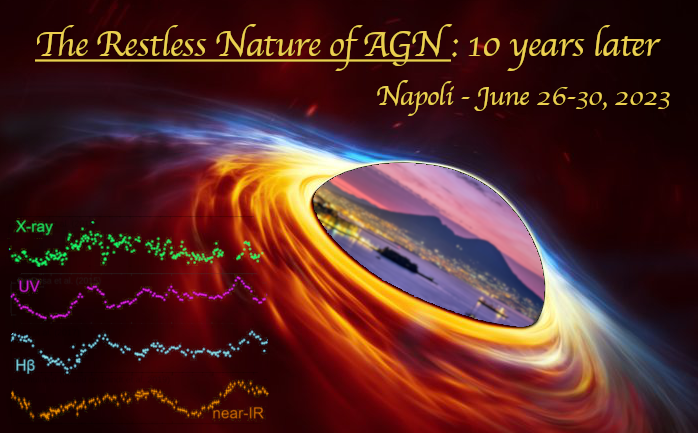Speaker
Description
AGN variability carries information about the geometry of the accretion flow which is usually unaccessible to direct imaging methods. In particular, the reverberation signals at optical wavelengths of reprocessed high-energy photons provide insight into the size of the disc itself as well as inclination, mass accretion rate and the temperature profile of the disc itself. Over the last decade, we have developed the intensive broadband reverberation mapping technique combining the capabilities of Swift and Las Cumbres Observatory (LCO) to perform long-term (multiple years), high-cadence (sub-day), multi-wavelength (X-rays to NIR) experiments on ~30 local AGN. These IBRM experiments have enabled stringent tests on the predictions of accretion theory and shown disagreements, catapulting new avenues to understand AGN variability. In this talk, I will review the main outcomes of the past IBRM campaigns, with particular focus on a high Eddington accretion source PG 1119+120. Our spectral and temporal decomposition allowed us to retrieve the signal of two components; a fast signal consistent with the X-ray reprocessing scenario, and a slow signal with a spectral energy distribution consistent with diffuse continuum emission from the broad-line region. I will also present the launch of our open-source database - AGN Variability Archive (AVA). This legacy database of processed light curves and spectra of ~10 years of observations taken by both Swift and LCO will enable further studies in accretion flows of supermassive black holes.

